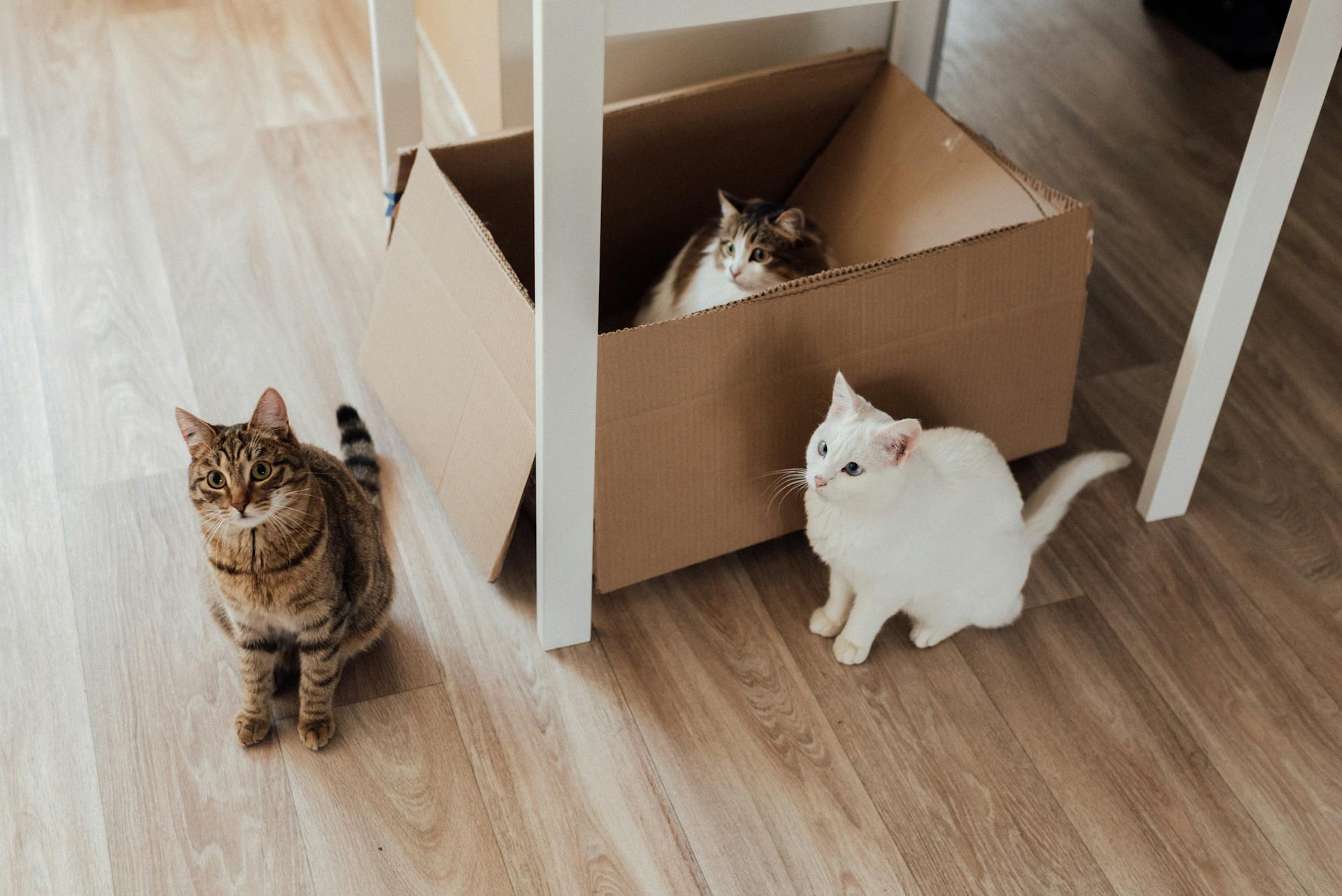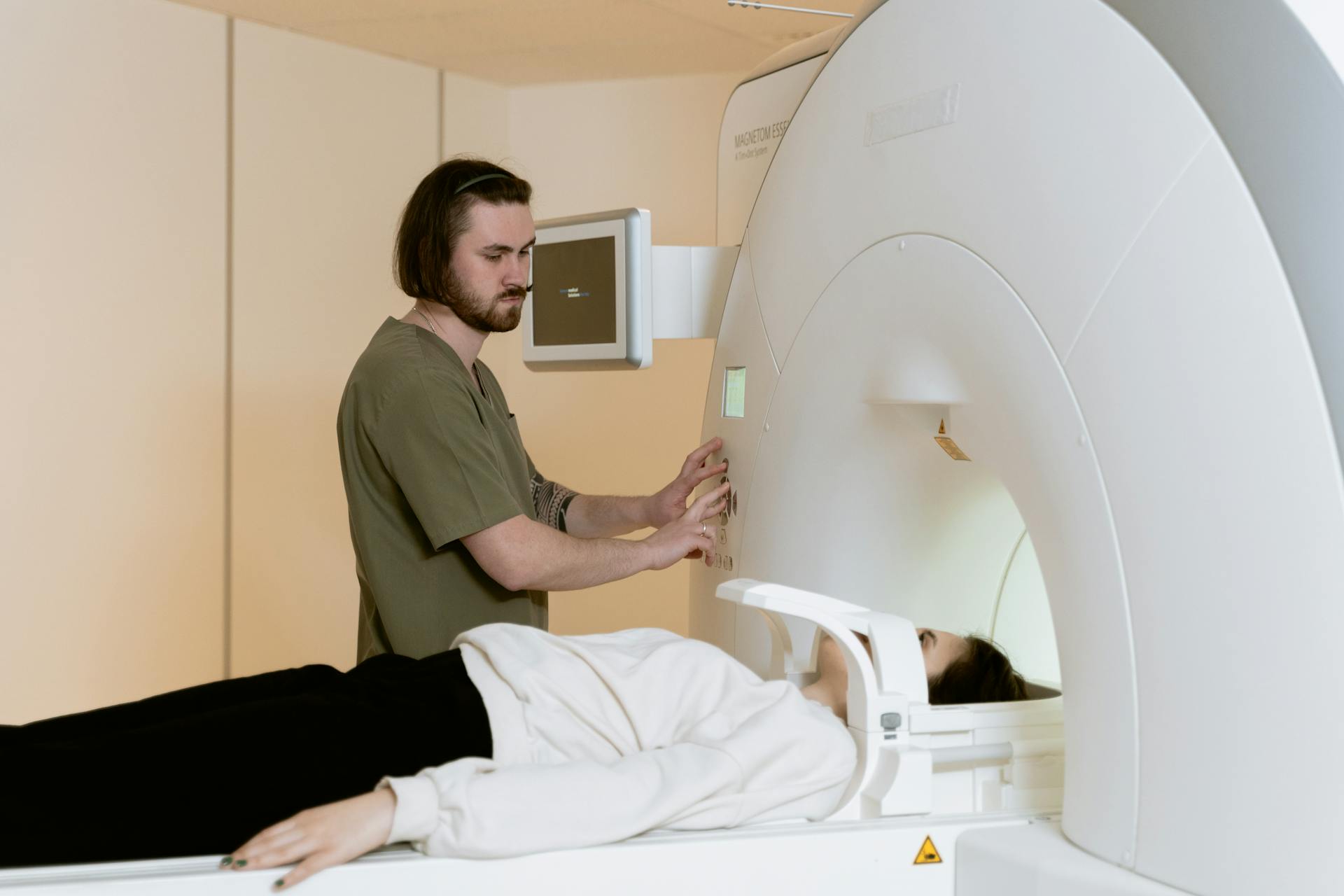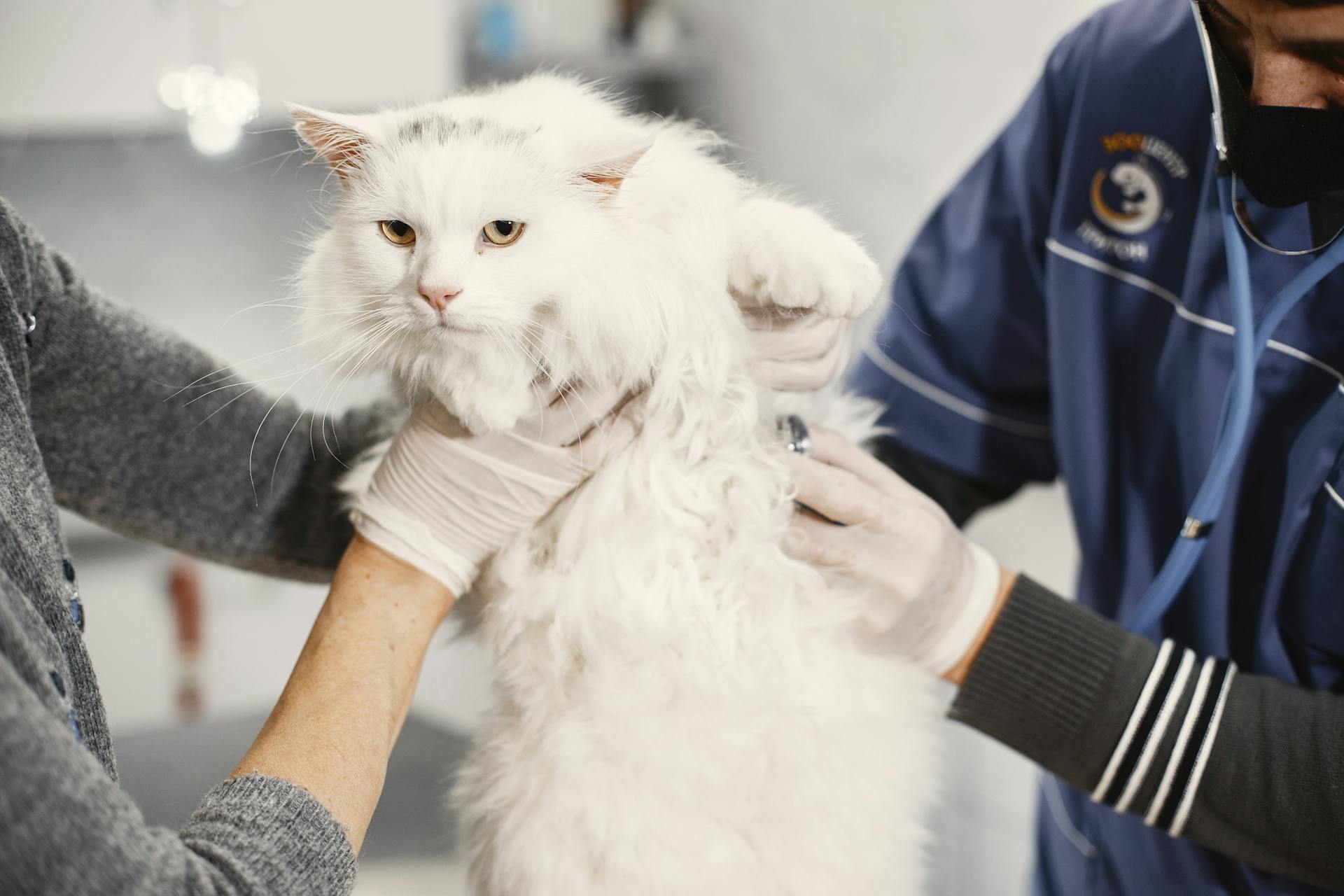
Cats with lymphoma can be treated with chemotherapy, which is a common and effective way to manage the disease.
Chemotherapy for cats with lymphoma typically involves a combination of medications, such as chlorambucil, cyclophosphamide, and prednisone.
The goal of chemotherapy is to shrink the tumor and control the disease, allowing your cat to live a longer and more comfortable life.
Chemotherapy can be given orally or by injection, and the treatment plan will be tailored to your cat's specific needs and health status.
Understanding Lymphoma
Lymphoma is a type of cancer that affects a cat's immune system, specifically the lymph nodes, spleen, and other lymphoid tissues.
Lymphoma can be divided into two main types: B-cell lymphoma and T-cell lymphoma, with B-cell lymphoma being the most common in cats.
The exact cause of lymphoma in cats is still unknown, but it's thought to be related to a combination of genetic and environmental factors, including exposure to certain viruses and toxins.
Treatment options for lymphoma in cats often involve chemotherapy, which can help manage symptoms and improve quality of life.
What Diagnostics Are Performed?
When diagnosing feline lymphoma, a complete blood count (CBC) is recommended to evaluate the cat's overall health. This test provides valuable information about the cat's red and white blood cell counts, as well as platelet levels.
A chemistry panel is also performed to assess organ function and detect any potential abnormalities. This test evaluates the cat's liver, kidney, and pancreatic function, among other things.
FeLV/FIV testing is crucial in diagnosing feline lymphoma, as these viruses can increase the risk of developing the disease. This test detects the presence of the feline leukemia virus (FeLV) and feline immunodeficiency virus (FIV).
Urinalysis is another diagnostic tool used to diagnose feline lymphoma. This test evaluates the cat's urine for any abnormalities, such as protein or blood in the urine.
An abdominal ultrasound is performed to evaluate the cat's gastrointestinal tract, liver, spleen, and internal lymph nodes. This test provides valuable information about the extent of the disease.
Intriguing read: Why Is My Cat's Fur so Soft?
Thoracic radiographs (x-rays) are used to examine the cat's lungs and lymph nodes for any signs of disease. This test can also detect fluid accumulation around the lungs.
These diagnostics provide prognostic information, a baseline for monitoring, and information regarding organ function and involvement. They can also influence treatment recommendations or help anticipate potential complications.
Here are the diagnostics typically performed for feline lymphoma:
Patient Characteristics
Let's talk about the patients in this study. One hundred and nineteen cats met the criteria for inclusion, with 50 from each of the UCD Veterinary Medical Teaching Hospital and the UWM VMTH, and the remainder from other universities.
The median age at diagnosis was 11 years, with a range of 1.3 to 19.1 years. Eight cats had surgery that made their disease status immeasurable, so their response to chemotherapy couldn't be categorized.
The majority of cats, 75, had an abdominal form of lymphoma, while 19 had a multicentric form, 14 had mediastinal or intrathoracic lymphoma, and 9 had renal lymphoma. Two cats had other types of lymphoma.
Here's a breakdown of the patient demographics:
Most of the cats, 96, were diagnosed with cytology, while 23 were diagnosed with histopathology. Immunophenotype was determined in 44 of the 119 cases.
Chemotherapy for Cats
Chemotherapy for cats is a common and effective treatment for feline lymphoma. It's a multi-drug treatment plan that uses different drugs to combat the cancer cells.
Cats with high-grade or large-cell lymphoma can benefit from combination chemotherapy with a three to five drug combination, alongside prednisolone. This treatment is usually administered over four months and can achieve a complete remission in about 50% to 70% of cats.
The goal of chemotherapy in cats is not to cure the cancer, but to bring it into remission and improve the cat's quality of life. This is because cancer cells can always resurface and affect the body again.
Chemotherapy in cats is different from human chemotherapy, as it's less aggressive and has fewer side effects. Approximately 90% of cats that receive chemotherapy experience no side effects, and about 10% experience a chemotherapy side effect that can often be managed with supportive home medications.
On a similar theme: What Side of a Cat Has the Most Fur?
The most common protocol for chemotherapy treatments in cats is the CHOP protocol, which uses different drugs to combat the cancer cells. This protocol can be effective for cats with intermediate- or high-grade lymphoma, and can achieve a partial remission in over half of the cats receiving this treatment.
Here's a summary of some common chemotherapy protocols for cats:
It's essential to note that the cost of chemotherapy can vary depending on the cat's response to treatment and the specific protocol used.
Survival and Support
Feline lymphoma has a variable prognosis, with some cats living for several months to a year or more with proper treatment.
High-grade lymphoma, in particular, has a poor prognosis, with a median survival time of around 3-4 months.
Treatment for high-grade feline lymphoma often involves chemotherapy, which can be effective in reducing tumor size and improving quality of life.
The goal of chemotherapy in feline lymphoma is to achieve a complete remission, which can be achieved in up to 50% of cats.
Discover more: Cats High Maintenance
However, even if a complete remission is not achieved, chemotherapy can still help manage the disease and improve survival time.
Support from family and friends can be incredibly helpful during this challenging time, providing emotional comfort and practical assistance.
Here are some general guidelines for caring for a cat with lymphoma:
It's essential to work closely with your veterinarian to develop a treatment plan that's tailored to your cat's specific needs and circumstances.
With the right support and care, many cats with lymphoma can live happy and fulfilling lives, even if their prognosis is not optimal.
By understanding the treatment options and providing the necessary care and support, you can help your cat feel more comfortable and secure during this challenging time.
Data and Statistics
For cats with lymphoma, the median progression-free interval (PFI) is 56 days, with a range of 2-2019 days. This means that half of the cats in the study were able to go without their lymphoma progressing for at least 56 days.
The median survival time (MST) for all 119 cats in the study was 97 days, also with a range of 2-2019 days. This gives us an idea of the average time these cats lived after being diagnosed with lymphoma.
38% of the cats with measurable disease experienced a complete response (CR) to treatment, while 24% achieved a partial response (PR). This is a significant finding, as it suggests that a substantial number of cats can benefit from chemotherapy.
The most common types of lymphoma that responded to treatment were abdominal lymphoma, with 45% of complete responders having this type, and multicentric lymphoma, with 29% of complete responders having this type.
Related reading: How Do Cats Know What Time It Is?
Frequently Asked Questions
What is the life expectancy of a cat with lymphoma?
A cat's life expectancy with lymphoma is approximately 4-6 weeks without treatment, but with chemotherapy, the median survival time is 6-12 months. Treatment can significantly improve a cat's chances of going into remission and living a longer life.
How much does chemo cost for cats?
Chemotherapy costs for cats can range from $150 to $600 per dose, with the total cost varying depending on the type of cancer, medication, and treatment duration. The exact cost will depend on your cat's specific needs and treatment plan.
Sources
- https://hospital.cvm.ncsu.edu/services/small-animals/cancer-oncology/oncology/feline-lymphoma/
- https://www.thepetoncologist.com/faqs-lymphoma-in-cats
- https://www.imprimedicine.com/blog/feline-chemotherapy-options
- https://www.ncbi.nlm.nih.gov/pmc/articles/PMC5012421/
- https://www.imprimedicine.com/blog/feline-lymphoma-treatment-options
Featured Images: pexels.com


